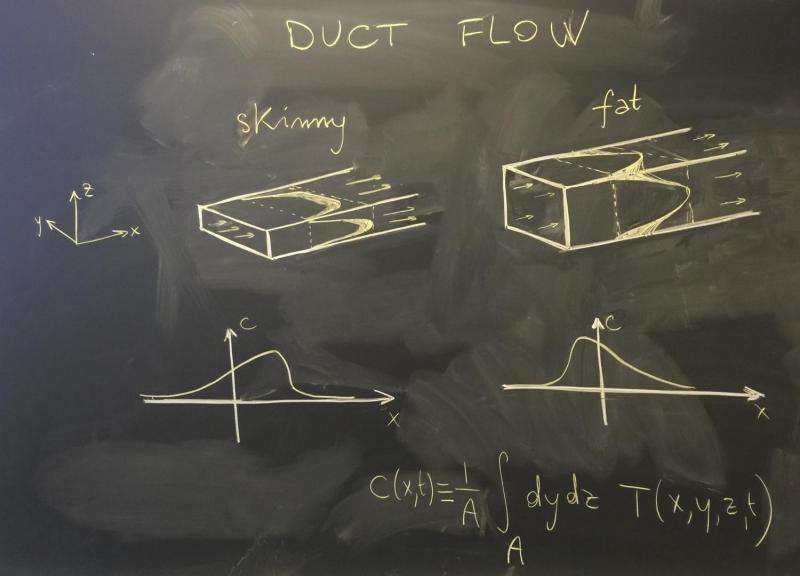Mathematics research reveals that the shape of a pipe dramatically affects how pollutants and other chemicals spread

Researchers have long known and well-documented how dye disperses when injected into a fluid flowing through a pipe.
But a team of mathematicians at the University of North Carolina at Chapel Hill has discovered that the size and shape of the pipe dramatically affects how the dye will disperse in the early moments after injection.
Their results have major implications for drug delivery, chemical manufacturing, managing pollutants spilled in waterways or any application that involves mixing substances into fluids that are flowing.
"Specifically, we found that flows in rectangular ducts instantaneously distribute pollutants asymmetrically as opposed to the even spreading observed in circular or elliptical pipe flows," said Richard M. McLaughlin, professor and chair of the department of mathematics in UNC-Chapel Hill's College of Arts and Sciences. "We also found that whether the duct is skinny or fat makes a huge difference."
McLaughlin, co-author with Kenan Distinguished Professor Roberto Camassa, both experts in fluid dynamics, and graduate students Manuchehr Aminian and Francesca Bernardi, report their results in "Squaring the Circle: Geometric Skewness and Symmetry Breaking for Passive Scalar Transport in Ducts and Pipes," published in the Oct. 5 issue of Physical Review Letters.
In skinny ducts, dye disperses with a sharp front followed by a long tapering tail, Camassa said. In fat ducts, the dispersion is reversed, with a gradual spread building to a sharp front.
"The area of the two rectangles may be the same, but the shape makes a significant difference in how the dye disperses," he said.
Knowing that could enable drug device makers, for instance, to produce rectangular devices of varying shapes that would allow some treatments to be delivered with a sharp punch and others dispensed gradually, based on what works best.
"The most surprising finding," Camassa said, "is that the rectangle that best mimics the spread that occurs in a round pipe is not a square, as one would expect, but a flatter rectangle with an aspect ratio of 1.82, meaning its width is approximately twice its height."
More information: Manuchehr Aminian et al. Squaring the Circle: Geometric Skewness and Symmetry Breaking for Passive Scalar Transport in Ducts and Pipes, Physical Review Letters (2015). DOI: 10.1103/PhysRevLett.115.154503
Journal information: Physical Review Letters
Provided by University of North Carolina at Chapel Hill


















